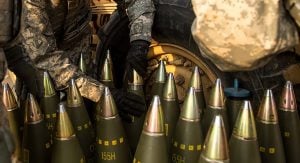Introduction
Materials like glass, cement, and carbon play a crucial role in modern infrastructure, industry, and even in defense technology. Their study not only helps in understanding fundamental chemistry but also aids aspirants preparing for competitive exams like NDA and CDS, where General Science questions are common. This article explores how these materials are prepared, their key properties, and their applications.
Preparation and Properties of Glass
Glass is an amorphous (non-crystalline) solid, typically transparent, made by melting silica (SiO₂) with soda (Na₂CO₃) and lime (CaO). The mixture is heated to around 1400–1600°C and then cooled rapidly to prevent crystallization.
Properties of Glass:
- It is brittle and hard.
- Transparent to visible light.
- Resistant to many chemicals.
- Non-conductor of electricity.
- Can be molded when hot.
Different types of glass (like borosilicate, soda-lime, and lead glass) are used in making lab equipment, windows, containers, and optical fibers depending on their properties.
Preparation and Properties of Cement
Cement is a vital construction material made by heating limestone (CaCO₃) with clay at about 1450°C. The resulting product is called clinker, which is then ground with gypsum (CaSO₄·2H₂O) to produce cement.
Properties of Cement:
- It sets and hardens when mixed with water (hydration reaction).
- High compressive strength.
- Water-resistant when set.
- Durable and long-lasting.
Portland cement is the most common type, used for constructing buildings, bridges, dams, and runways.
Preparation and Properties of Carbon
Carbon occurs in various allotropic forms including diamond, graphite, and amorphous carbon (like coal, charcoal, and coke). These forms are naturally occurring, but some are also industrially prepared. For example, activated charcoal is produced by heating carbon-rich materials in the absence of air.
Properties of Carbon:
- Diamond is the hardest known natural substance and an electrical insulator.
- Graphite is soft, slippery, and a good conductor of electricity.
- Carbon is chemically stable and forms a vast number of compounds, especially organic ones.
- It resists decomposition at high temperatures.
Due to its versatile nature, carbon is used in pencils (graphite), jewelry (diamond), filters (activated carbon), and metallurgy (coke in blast furnaces).
Conclusion
Understanding the preparation and properties of glass, cement, and carbon is vital for both academic knowledge and competitive exam success. These materials demonstrate the diversity of chemical compounds and their practical significance in construction, industry, and everyday life. A strong grasp of these topics not only aids in scoring well in exams like NDA and CDS but also enhances one’s appreciation of material science.


















